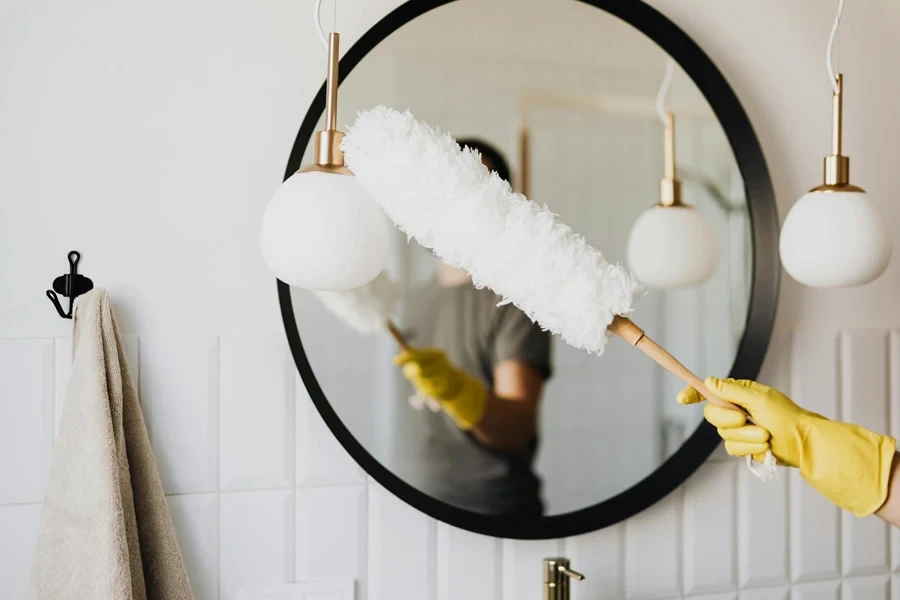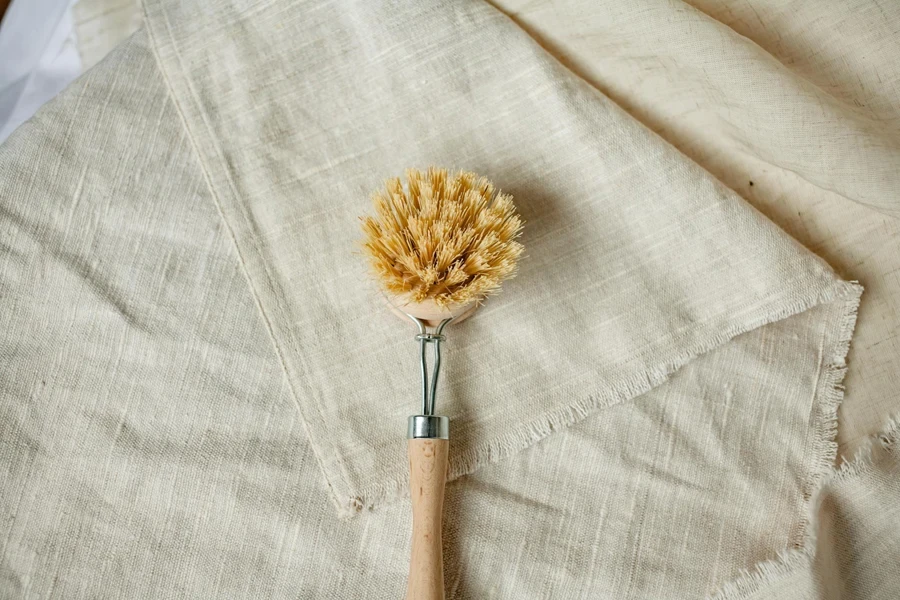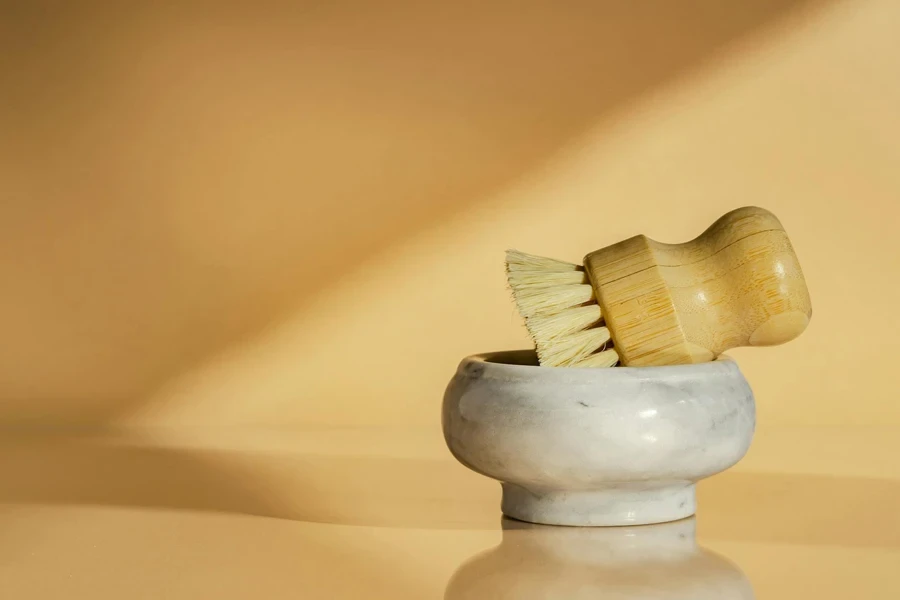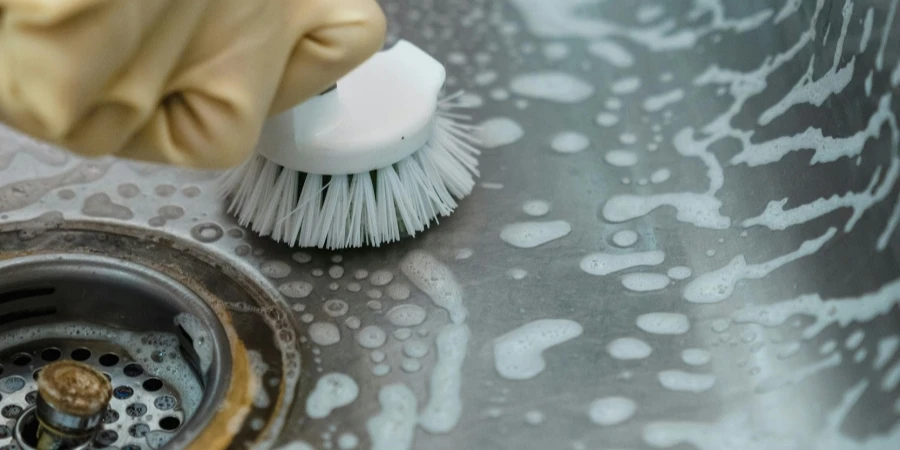Table of Contents
● Introduction
● Market overview
● Different types of cleaning brushes
● Things to consider when buying cleaning brushes
● Conclusion
Introduction

Cleaning brushes are essential tools for maintaining a clean home. From deep cleaning to dusting, the right brush can make all the difference in achieving spotless results efficiently. This guide navigates the options and identifies the best cleaning brushes available. Market trends, different brush types, and key features will be explored to aid in product selection. By the end, readers will be well-equipped to make informed decisions for their cleaning toolkit.
Market overview

Market scale and growth
The global household cleaning tools market was valued at USD 255.7 billion in 2023 and is projected to to rise at a strong CAGR of over 4.8% over the forecast period of 2023-2030. This significant growth is driven by increasing awareness about hygiene and cleanliness, alongside technological advancements in cleaning tools. The market is characterized by the introduction of innovative and efficient cleaning products that cater to the rising demand for effective household cleaning solutions.
Market share
Asia Pacific holds the largest market share, followed by North America and Europe. The dominance of the Asia Pacific region is attributed to rapid urbanization, rising disposable incomes, and increased awareness about hygiene standards. In North America and Europe, the market is propelled by the high adoption of advanced cleaning technologies and a strong preference for quality cleaning products. Additionally, market dynamics are influenced by factors such as innovative packaging, brand development, and the incorporation of natural ingredients in cleaning tools, which appeal to health-conscious consumers.
Different types and cleaning brushes

Deep clean brushes
Deep clean brushes are essential for tackling narrow and hard-to-reach spaces, such as stovetops, grout gaps, shower door tracks, and other tight areas. These brushes are designed with a small size and feature nylon wiper blades that allow for precision cleaning. Their ergonomic handles and durable bristles are engineered to withstand rigorous scrubbing without losing their shape, making them ideal for both residential and commercial use.
Bottle scrub brush sets
Bottle scrub brush sets are specifically designed for cleaning items with narrow openings, such as mugs, bottles, and straws. These sets come in various sizes and feature flexible, food-grade silicone bristles that can reach all areas, ensuring thorough cleaning. The brushes often include non-slip handles for better grip and control, and the bristles are resistant to high temperatures, making them suitable for cleaning both hot and cold beverage containers.
Dusting brushes
Dusting brushes are used for removing dust and dirt from windows, ceiling fans, blinds, and other surfaces that accumulate fine particles. These brushes are characterized by soft, anti-static bristles made from synthetic or natural fibers, and ergonomic handles designed to reduce user fatigue. The bristles are specifically chosen for their ability to capture and hold dust particles without redistributing them into the air, enhancing indoor air quality.
Dryer lint brushes
Dryer lint brushes are crucial for maintaining dryer safety by removing lint from dryer vents, which reduces the risk of fire. These brushes are typically thin and cylindrical, with bristles made from heat-resistant nylon or polypropylene. The flexible design allows the brush to navigate through the vent system efficiently, ensuring all lint is removed. Regular use of dryer lint brushes can improve dryer performance and extend the appliance’s lifespan by preventing overheating and reducing drying times.
Double-sided electronics cleaning brushes
Double-sided electronics cleaning brushes are perfect for maintaining the cleanliness of electronic devices such as computer screens, keyboards, and camera lenses. These brushes feature fine, anti-static bristles on one side for gentle cleaning and coarser bristles on the other side for removing more stubborn dirt. The handles are often made from conductive materials to safely dissipate static electricity, protecting sensitive electronic components. The compact design allows for easy storage and accessibility, making them a valuable tool for maintaining electronic equipment in optimal condition.
Things to consider when buying cleaning brushes

Purpose and application
Determining the primary use of a cleaning brush is crucial for ensuring efficiency and effectiveness. Brushes designed for specific tasks offer features tailored to those applications. For instance, kitchen cleaning brushes may feature heat-resistant bristles capable of withstanding high temperatures from hot water or surfaces. Bathroom brushes often include stiff, antimicrobial bristles to tackle tough grime and prevent bacterial growth. Brushes for electronics typically have anti-static properties to safely clean sensitive components without causing damage.
Bristle material and type
The choice of bristle material significantly impacts the performance and durability of a cleaning brush. Soft bristles, such as those made from natural fibers or fine nylon, are ideal for delicate surfaces, as they can effectively clean without scratching. Hard bristles, often composed of durable synthetics like polyethylene or stainless steel, are better suited for removing tough grime and dirt. Brushes with heat-resistant nylon bristles are particularly useful in environments exposed to high temperatures. Additionally, chemical-resistant bristles ensure longevity when used with harsh cleaning agents.
Handle design and comfort
Ergonomic handle design is a key factor in reducing user fatigue and enhancing comfort during extended use. Brushes with long handles, often made from lightweight materials like aluminum or reinforced plastic, are advantageous for reaching high or deep areas such as ceiling fans or behind appliances. Short-handled brushes provide precision and control for detailed cleaning tasks and typically feature non-slip grips made from materials like rubber or thermoplastic elastomers. Some handles are designed with a hollow core to reduce weight, further enhancing user comfort.
Maintenance and durability
The ease of cleaning a brush affects its longevity and performance. Brushes with detachable bristle heads or self-cleaning mechanisms extend the product’s lifespan by preventing the accumulation of dirt and bacteria. High recovery strength, often achieved through the use of resilient materials like polyester or polypropylene, ensures that bristles maintain their shape and rigidity after repeated use. UV-resistant coatings can protect brushes stored in outdoor environments, and reinforced bristle bases prevent deformation under heavy use.
Brand and quality
Opting for reputable brands known for quality ensures reliability and customer satisfaction. Leading manufacturers often incorporate advanced manufacturing techniques, such as injection molding or ultrasonic welding, to enhance the durability and performance of their products. These brands may offer brushes with patented designs, such as angled bristles for better reach or dual-texture surfaces for versatile cleaning. Good quality brushes undergo rigorous testing to meet industry standards, providing assurance of their effectiveness and longevity in various applications.
Conclusion

Selecting the right cleaning brush requires careful consideration of factors such as purpose, bristle material, handle design, and brand reputation. Understanding market trends and the various types of brushes available enables informed decisions, ensuring effective and efficient cleaning solutions for both residential and commercial settings. This comprehensive approach ensures optimal performance and longevity, enhancing overall cleanliness and hygiene.




